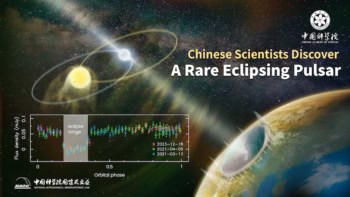
Think back to summer. Long, hot, sultry days, rounded off with a finale of atmospheric fireworks. But sometimes the thunder and lightning fail to materialize, even on the most stifling of summer days, and on other occasions the sky starts to rumble with seemingly no provocation. Now, a study by researchers in the UK shows it is not just conditions down here on Earth that determine how much thunder and lightning we get – the Sun’s magnetic field also has a big influence, more than doubling the number of lightning bolts on some days.
Physics textbooks depict the Earth as having a simple and symmetrical magnetic field, but in fact it is usually skewed, with its poles up to 5° out of line. These kinks are caused by the pull of the Sun’s magnetic field, which fluctuates with sunspot number and the strength of the solar wind. Sometimes the solar magnetic field points towards the Sun and other times it points away.
“Typically, the solar field shifts every 10 to 15 days, meaning that the Earth’s field is usually bent in one direction or the other,” explains Mathew Owens of the University of Reading, who led the study. By studying lightning data gathered by the UK’s Meteorological Office and plotting it against satellite measurements of the solar magnetic field, Owens and his colleagues were able to assess the influence that the solar magnetic field has on electrical storms here on Earth.
Towards the Sun
The team found that from 2001 to 2006, lightning rates over the UK increased by an average of 40–60% when the solar magnetic field was pointing towards the Sun. Thunderstorm activity still occurred on days when the Earth was in an away sector (with the solar field pointing towards Earth) but it was less frequent. For example, during July there was an average of 40 lightning flashes on “away sector” days, but about 90 flashes on “towards sector” days.
Exactly how the solar magnetic field causes these variations in thunderstorm activity is not clear, but Owens and his colleagues suspect that the changes in the shape of the Earth’s magnetic field affect the number of energetic charged particles (cosmic rays) that are channelled into the Earth’s atmosphere from outer space.
“Each time the Earth’s field bends, it exposes different locations to different particle intensities, changing local atmospheric ionization, which makes it harder or easier to trigger lightning,” says Owens.
Latitude and radon
Because geomagnetic variations are more significant at high latitudes, the effect is likely to be greatest in higher-latitude countries such as the UK. But other factors are important too. “It may be that areas with lower atmospheric ionization from ground-level sources such as radon are more sensitive to cosmic-ray variation,” says Owens. “And equatorial regions generally have stronger and more-frequent convection so there is more opportunity for solar modulation to act, even if that modulation is generally weaker.”
Next, the researchers hope to see how the relationship between solar field and lightning holds for other countries, as well as assessing it over time using historical records going back 150 years. Ultimately, Owens and his colleagues hope that their findings could be used to improve lightning forecasts, by incorporating information about the solar magnetic field into numerical weather predictions.
The findings are published in Environmental Research Letters.
- This article first appeared on environmentalresearchweb



